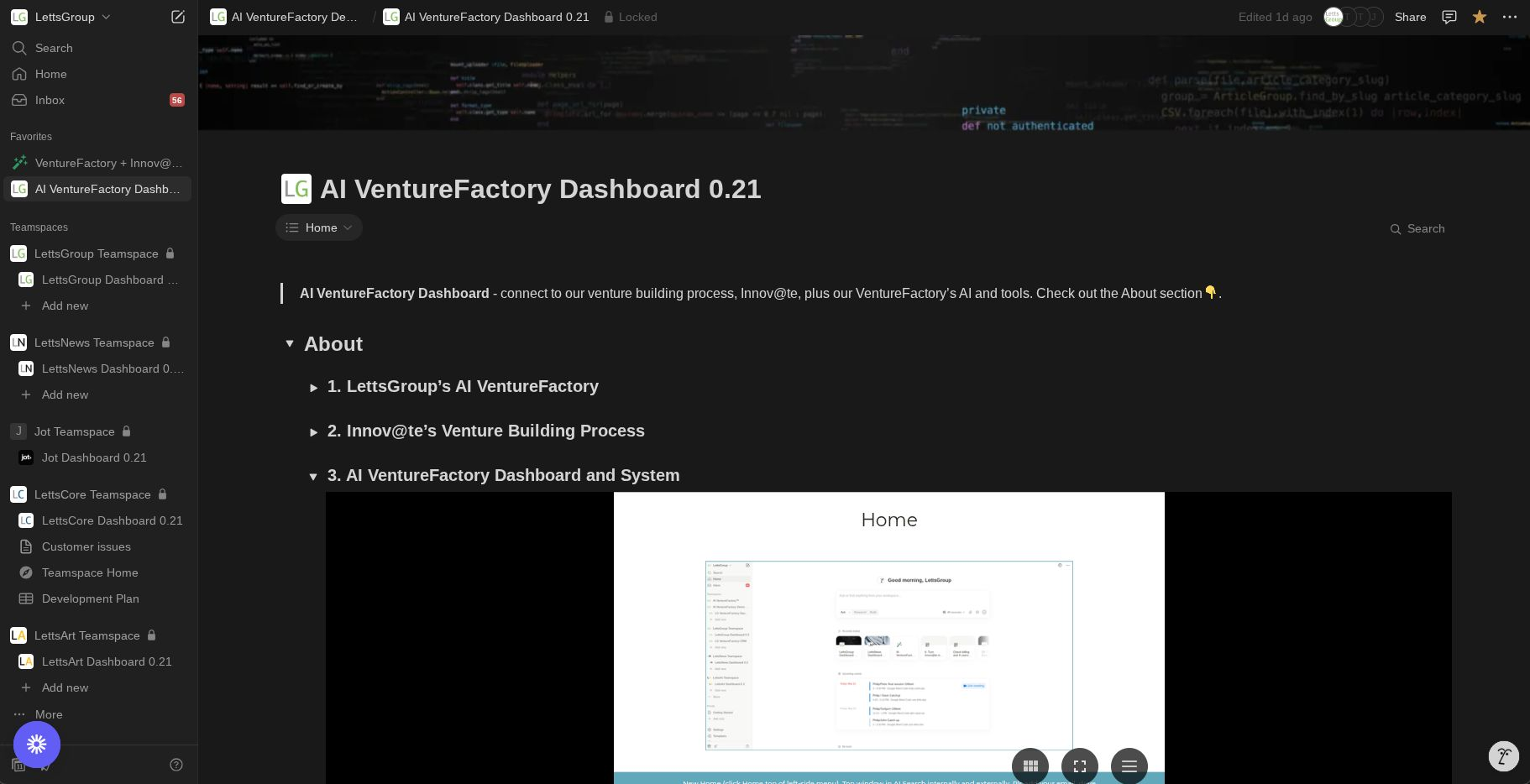We are publishing this definitive guide to new-style venture building section by section, week after week, over the coming weeks - starting today. It's the ultimate guide for startup founders, investors and advisers.
Venture building is the process of taking an idea and developing it into a successful, scalable business. Traditionally, this process has been highly artisanal and ad hoc, often relying on the intuition and heroic efforts of founders. Unfortunately, the outcomes of the traditional approach are sobering: around 60% of startups in the UK fail within their first three years, with only about 42% surviving five years. Globally, the picture is similar - the conventional venture model accepts that perhaps one in ten startups will succeed on a large scale, while the rest falter. These high failure rates point to a fundamentally broken process for building and scaling new ventures. In short, too many resources are wasted and too many good ideas never reach their potential under the old model.
Why does traditional venture building struggle? One core issue is that each startup “reinvents the wheel.” Founders typically must learn how to build a company through trial and error, discovering what works in product development, go-to-market, team building, and financing largely on their own. Little of this hard-won knowledge is codified or transferred to others. This leads to massive inefficiencies and repeated mistakes across the startup ecosystem. Another issue is an excessive focus on short-term outputs (like getting a minimal product and first customers) without developing the underlying systems and operations needed for long-term scale. This myopic focus means many startups flame out when it’s time to scale up, as they lack the infrastructure to support growth.

Enter “new style” venture building - an AI-driven, automation-enabled approach that aims to fundamentally improve the venture creation process. In contrast to the ad hoc traditional method, this new software-driven approach treats venture building as a disciplined, repeatable process - more like manufacturing than alchemy. Just as Henry Ford revolutionised car production with the moving assembly line, the new style of venture building applies automation, data, and process engineering to systematically take startups from idea to scale. Advanced technology (especially artificial intelligence) is leveraged at every stage to reduce manual effort and human error. The goal is to double or even triple venture success rates by eliminating guesswork and bringing science to the art of entrepreneurship.
Crucially, AI-driven venture building isn’t just an incremental tweak - it promises a paradigm shift for how startups are built. It involves using AI tools and software platforms to guide founders through proven frameworks, automating routine tasks, and augmenting human decision-making with data-driven insights. This guide provides a comprehensive look at this new style of venture building. We will compare it to traditional methods, explore a leading example (LettsGroup’s AI VentureFactory and Innov@te™ methodology), and examine how automation-enabled scaling changes the economics of startups. We’ll discuss strategies to overcome scaling challenges, the tech stack needed for automation-first growth, and implications for venture capital investors. We’ll also look at case studies of startups that scaled rapidly with small teams thanks to AI and automation, and peer into the future where venture capital itself may operate as a platform.
The promise of AI-driven venture building is a startup ecosystem where a small, agile team can achieve what used to require an army of employees and massive capital. By the end of this guide, entrepreneurs and investors will understand how to leverage this approach to build more resilient, scalable ventures - and perhaps revolutionise the innovation economy in the process.
Traditional venture building has often been likened to navigating uncharted waters with no map - each startup finds its own way, and many sink. In the current ad hoc, artisanal approach, success depends heavily on the founder’s personal hustle, luck, and ability to learn on the fly. There is typically no repeatable blueprint; one founder might obsess over product features while another focuses on sales, and each builds their company with unique, improvised processes. This artisanal model leads to huge variability in outcomes and a low signal-to-noise ratio in terms of what works. As noted in one analysis, building startups today remains “largely unchanged from decades past - reliant on founder intuition, trial-and-error methodology, and highly variable approaches,” creating limitations that perpetuate high failure rates. In most industries, such a 90% failure rate would be unacceptable, but in startups it has long been considered the cost of doing business.
By contrast, the AI-driven, automation-first approach to venture building is about moving from craft to manufacturing discipline. Instead of every startup reinventing processes, the new style codifies the venture-building journey into defined stages, steps, and best practices. For example, LettsGroup’s Innov@te™ framework encapsulates the process from idea to exit in 7 stages, 49 steps, each with sub-steps and checklists. This provides a standardised roadmap that any startup can follow, reducing reliance on individual gut feel. Knowledge that was once tacit and founder-dependent is made explicit and shareable. In effect, the new model creates an “assembly line” for startups - with ideation, validation, product development, market entry, growth, and even exit strategy all defined as repeatable sequences. Just as an automotive factory has a predictable process to ensure quality output, an AI-driven venture factory aims to produce viable startups with far more consistency than the old artisanal approach.
In essence, the traditional method is like artisan craftsmen hand-building custom cars (beautiful when it works, but expensive and failure-prone), whereas the AI-driven method is like a well-oiled factory assembly line for ventures. The latter doesn’t eliminate creativity - entrepreneurs still come up with innovative ideas - but it provides a process infrastructure to execute those ideas more reliably. This shift is akin to moving from building one-off prototypes to a repeatable manufacturing process for startups.

Notably, the venture studio model that emerged in recent years was a precursor to this new style. Venture studios brought more systematic company creation by generating ideas in-house and providing shared resources to launch multiple startups. However, venture studios often still rely on significant human involvement and bespoke efforts for each venture. The AI-driven venture factory takes this a step further - fully tooling the process with software and AI so that much of the venture building can be automated or centrally managed. For example, a venture studio might have advisers and templates to help startups, but an AI venture factory will have an actual software platform that executes tasks (like automatically running marketing campaigns or generating financial models) and guides the team through every step. It’s the difference between offering advice and providing an integrated machine that does the heavy lifting.
Further, a new style venture building software platform is considerably more cost effective and empowering than traditional venture studio body shops.
To summarise, the new style of venture building dramatically contrasts with the old: it is systematic where the old way is haphazard, data-driven where the old is intuition-driven, and platform-based where the old is individual-based. This difference matters because it attacks the root causes of startup failure. High failure rates are not simply a law of nature – they result from the inefficiencies and knowledge gaps of the traditional approach. By addressing those with structured methods and AI assistance, new style venture building hopes to create a world where startups succeed far more often, with less waste of time and capital in the process.
One of the leading exemplars of this new venture building paradigm is LettsGroup, a UK-based venture group that has built what it calls an AI VentureFactory platform powered by its Innov@te™ methodology. LettsGroup’s approach provides a concrete case study in how to implement AI-driven, automation-first venture building.
At the heart of LettsGroup’s model is the Innov@te™ methodology, which is essentially a detailed playbook for venture building. As mentioned, it consists of 7 core stages, 49 steps and hundreds of sub-steps, covering the entire journey from ideation to exit. The seven stages are defined as: (1) Creativity, (2) @HA Idea (a validated “aha” idea), (3) Concept, (4) Market Entry, (5) Market Development, (6) Market Dominance, and (7) Exit. This sequence starts from the spark of an idea and progresses through building a product, entering the market, scaling up, achieving leadership in the market, and finally preparing an exit (such as an acquisition or IPO). Each stage has specific objectives and checkpoints. For example, Market Entry would involve launching the product to early customers and iterating the go-to-market strategy, whereas Market Development would focus on expanding customer acquisition channels and refining the business model for growth.
What makes Innov@te more than just a static manual is that LettsGroup has turned it into a dynamic software platform - the AI VentureFactory. The AI VentureFactory is a suite of integrated apps, tools, and AI assistants that together function as a co-pilot for startup teams. It guides entrepreneurs through each of the 49 steps with templates, checklists, and AI-driven recommendations. For instance, in an early step the platform might prompt the founder to conduct market research, and even provide an AI tool to perform that research (scouring data or competitor info). Later, in a product development step, the platform might include a project management module pre-loaded with agile templates or user testing protocols. Everything is tied into one system so that the venture’s progress is tracked and each step feeds into the next.
Importantly, the AI VentureFactory doesn’t just advise - it automates and executes many tasks. LettsGroup describes it as a “hybrid AI suite” providing integrated apps for things like marketing, CRM (customer relationship management), productivity, project management, issue tracking, investor relations and more. For example, the platform can automate marketing campaigns using AI content generators, manage the sales pipeline through a CRM integrated with communication tools, and keep financial records up to date - tasks that normally would require hiring multiple roles or even agencies can be handled by the platform’s tools. An integrated AI chatbot assistant is even available (LettsGroup’s “How to AI Innovate!” bot) to answer founders’ questions and provide startup intelligence drawn from the venture factory’s knowledge base. In short, LettsGroup’s platform is like having a full operations team and mentor network in software form, available on-demand. Some have even called it the AWS of venture building!
The combination of Innov@te methodology and the AI VentureFactory platform yields what LettsGroup calls a “venture manufacturing system.” In fact, they explicitly compare it to a production system akin to ERP (Enterprise Resource Planning) but for startups – humorously dubbed “Innov@te VRP (Venture Resource Planning)”. The platform manages the process flows (the 49 steps), the data, and even the work allocation akin to an assembly line for new ventures. By doing so, it aims to reduce the cost of venture building, accelerate growth, and double success rates relative to industry norms. LettsGroup has stated the goal of helping ventures go from “zero to IPO” faster, more predictably and in a capital-efficient manner.
It’s instructive to see how LettsGroup’s approach differs in practice from traditional incubation or accelerator programs. A typical accelerator might provide a 3-month program of mentorship, some template documents, and a small investment for a considerable chunk of your company. LettsGroup’s VentureFactory, on the other hand, is positioned as an ongoing subscription-based co-pilot for building a company. In fact, LettsGroup offers tiered subscription plans for startups to use its platform: e.g. a Startup Lite plan starting at just £295 per month, with further plans for more advanced startups needing more features and support. This “startup building as a service” model shows how venture support is productised in the new approach. Instead of spending (or wasting) millions in trial-and-error, a startup might pay a predictable monthly fee to get the scaffolding it needs to grow. This aligns incentives as well - the venture factory is motivated to help the startup succeed so that it remains a paying (and growing) customer through the stages.

LettsGroup has already used its AI VentureFactory internally to build and launch several of its own “branded ventures.” These include LettsCore (a content management blockchain), LettsNews (an AI-powered “newsroom tech for everyone”), LettsArt (an AI co-code platform for the art world), and LettsSafari (a nature-tech venture). Each of these was developed using the same Innov@te methodology, demonstrating its versatility. By dogfooding their platform on their own ventures, LettsGroup could refine the process. They report that previous ventures they built (even before the AI platform) - such as Beenz (an early digital currency), SurfKitchen (mobile phone-top software), and Maistro (a business services marketplace) - achieved over $1 billion in combined peak valuation. Those experiences fed into the Innov@te framework as well. Now, with the AI VentureFactory, LettsGroup not only builds its own companies but also “co-pilots” external startups and corporate ventures on the platform. Essentially, they have turned venture building into a service that others can tap into.
A few aspects of LettsGroup’s methodology stand out as particularly innovative in venture building:
Size Zero Philosophy: In parallel with Innov@te, LettsGroup developed what they call a “Size Zero” design philosophy for ventures. This philosophy emphasises designing startups to be highly efficient and automated from day one - essentially building a scaled business model in miniature . The idea is to architect the company (its processes, cost structure, and tech) such that it can scale gracefully without massive complexity or cost explosion. For example, a Size Zero approach might impose frugality and automation early: only 5 staff managing what others would delegate to 50, by relying on software and automation (AI). LettsGroup uses this philosophy to help founders embed lean, agile, and cost-controlled designs into their ventures from the start. Combined with the Innov@te process, it acts like a modern just-in-time and continuous improvement system, analogous to how manufacturing evolved with techniques like Kanban or Six Sigma - but applied to growing a business.
Integrated Toolset and Data: The venture factory platform doesn’t just outline steps; it provides the tools to execute each step. LettsGroup’s platform integrates proprietary and third-party apps for everything from marketing automation to issue tracking to fundraising. All these tools produce data that feed into a unified dashboard, allowing real-time tracking of a venture’s KPIs and progress. This addresses a common blind spot in traditional startups where different tools are siloed (spreadsheets here, Trello boards there, etc.). By operating on one platform, a venture factory can apply AI analytics across the venture - spotting risks (e.g. if user engagement metrics are trending down) or opportunities (e.g. a marketing channel shows exceptional ROI) faster than a human team could. It essentially gives a bird’s-eye view of the startup’s health, something investors and founders typically struggle to get in real time.
Systematic De-risking: The Innov@te methodology systematically addresses common failure points. For instance, it enforces rigorous market validation in the Concept stage to ensure there is genuine demand before heavy scaling. It has steps for funding readiness - essentially preparing the startup to cross the “valley of death” between initial funding and Series A by ensuring the fundamentals (traction, metrics, pitch) are strong. By baking in these checkpoints, the venture factory tries to de-risk ventures early and continuously, rather than the traditional approach of discovering a fatal flaw only when it’s too late (e.g. running out of cash unexpectedly, or discovering no product-market fit after a big launch).
LettsGroup’s AI VentureFactory illustrates how a venture builder can become a platform and process owner instead of just a mentor or investor. Early indications suggest such systematic support can improve outcomes significantly. As noted, LettsGroup believes its approach can achieve on the order of 20% big-success rate (1 in 5) and up to a 90% lower cost to build startups. Even if those exact figures are aspirational, it’s clear that ventures built with robust methodologies have a better shot than those relying purely on improvisation. By reducing the cost and increasing the success odds, platforms like the AI VentureFactory may well alter the economics of entrepreneurship - making it feasible to build substantial businesses with far less capital and time than before.
In the subsequent sections which we will publish over the next few weeks, we delve into those economic changes and other implications of automation-enabled venture building. But the big takeaway from LettsGroup’s example is this: venture building can be systematised. Much as industries from manufacturing to software development have benefited from standard processes and automation, so too can the process of creating new companies. The Innov@te methodology and AI VentureFactory are a concrete embodiment of the “new style” venture building - blending human creativity with AI-powered execution to produce ventures better, faster, and cheaper.
Next section - The New Economics of Venture Building.
If you are an entrepreneur with a tech or digital venture, sign up for LettsGroup's AI VentureFactory today.